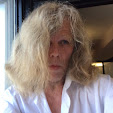Directed by D. W. Griffith for the Biograph Film Company the film features the first photoplay written by Anita Loos. Subsequently, Loos was to write the scenarios and screenplays to films which starred Douglas Fairbanks. The New Movie Magazine during 1930 nostalgically related that the film had also introduced Lionel Barrymore to the screen and that Loos, who had only been sixteen years old at the time of its release, had received “the large sum of $15” for writing the film. Author Iris Barry explains that it was not only Anita Loos that was behind the scenes, “At this period, ideas for films were commonly bought from outsiders and members of the company alike. Mary Pickford, Mack Sennett and others contributed many of the plots Griffith used.” This in part can be taken into consideration when apply Autuer theory to the abrupt difference between the scriptwriting methods of D.W Griffith and Thomas Ince and when reconsidering autuer theory when comparing the directorial efforts of D.W. Griffith and Ingmar Bergman in the mileau of a theatrical acting company.
In the volume D.W. Griffith, American Filmaker, Iris Barry writes that 1912 was a year that D.W. Griffith was an innovator not only in the depiction of social themes and social problems but also in film technique and the uses of the camera as well as the legnthening of the onscreen running time of the two reeler. Barry describes the filmmaking involved in “The New York Hat” (one reel),The film uses cut-backs, close-shots and sharply edited scenes with ease and mastery: close-ups made acting a matter of expresssion and minute guestures instead of the stereotyped guestures of the popular theater.” Peter Cowie, in his volume Eighty Years of Cinema, writes, "Close ups already predominate this film."
In the short scenes of Griffith’s film, Mary Pickford is shown to the right of the screen in medium close shot, trying on a hat, her hands and elbows shown in the frame. Griffith cuts on the action of her leaving the frame to exterior shots. In a later scene, Griffith positions her to the left of the screen, and, his already having shown time having elapsed between the two scenes, then brings the action back to the right of the screen frame. As an early reversal of screen direction, or screen positioning, there is the use of screen editing in between the complimentary positions of showing her in the same interior. During the film the actress is, almost referentially, often kept in profile, facing to the right of the screen's frame. Although Griffith may have been still developing editing techniques, it has been noted that the acting style in the film can be seen as an example of a more naturalistic and less histrionic acting style than that of other contemporary films.
Silent Film
D.W. Griffith
Biograph Film Company

Scott Lord on the Silent Film of Greta Garbo, Mauritz Stiller, Victor Sjostrom as Victor Seastrom, John Brunius, Gustaf Molander - the Golden Age of Swedish Silent Film........Lost Films in Found Magazines: Victor Seastrom directing John Gilbert and Lon Chaney, the printed word offering clues to deteriorated celluloid, extratextual discourse illustrating how novels were adapted to the screen; the photoplay as a literature, a social phenomenon; how it was reviewed, audience reception.
Scott Lord on Silent Film

Gendered spectatorship notwithstanding, in a way, the girl coming down the stairs is symbolic of the lost film itself, the unattainable She, idealized beauty antiquated (albeit it being the beginning of Modernism), with the film detective catching a glimpse of the extratextural discourse of periodicals and publicity stills concerning Lost Films, Found Magazines
Saturday, May 24, 2025
Scott Lord Silent Film: The New York Hat (D.W. Griffith, Biograph)
Greta Garbo Victor Sjostrom Silent Film
Scott Lord on Silent Film, Scott Lord on Swedish Film, Scott Lord on Mystery Film
at
9:51:00 PM
Greta Garbo Victor Sjostrom Silent Film
D W Griffith,
D.W. Griffith,
Mary Pickford,
Scott Lord Silent Film,
Silent Film,
Silent Film Biograph Film Company
 Scott Lord on Silent Film, Scott Lord on Swedish Silent Film, Scott Lord on Danish Silent Film
Scott Lord on Silent Film, Scott Lord on Swedish Silent Film, Scott Lord on Danish Silent Film
Subscribe to:
Post Comments (Atom)
No comments:
Post a Comment